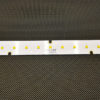Led Technology
AI and the LED
AI and the LED: A Convergence of Art, Technology, and Experience
In the intersection of art and technology, the fusion of Artificial Intelligence (AI) and Light Emitting Diodes (LEDs) is illuminating new horizons. From interactive art installations to smart city applications, this collaboration is a cutting-edge exploration of creativity and innovation. Let’s delve into how AI and LEDs are coming together to create extraordinary experiences.
Introduction
LED technology, known for its energy efficiency, flexibility, and color versatility, has found a fascinating partner in AI, which offers adaptability, learning, and interaction. Together, they provide a dynamic platform for artists, engineers, and city planners to create immersive and engaging solutions. Lets consider some existing AI like applications
Interactive Art Installations
AI-Driven LED Sculptures
Artists are experimenting with sculptures that respond to human interaction using AI algorithms and LEDs. Here are some notable examples:
- teamLab’s “Wander through the Crystal Universe”: This interactive installation utilizes LEDs and real-time 3D tracking of visitor movement. As people walk through the space, the light sculptures react, creating a personalized and immersive experience.
- Rafael Lozano-Hemmer’s “33 Questions per Minute” and Other Works: Lozano-Hemmer often uses interactive technologies, including AI and LEDs, to create pieces that react to viewers’ presence and participation. His works often involve complex algorithms that drive the visual experience.
- Studio Roosegaarde’s “Crystal”: This installation comprises hundreds of LED crystals that respond to human touch. Although not solely reliant on AI, the incorporation of sensors and adaptive algorithms creates an interactive experience where the audience becomes part of the creation process.
- Ars Electronica Futurelab’s “Spaxels”: Spaxels are LED-equipped drones controlled by sophisticated algorithms. They’ve been used in performances to create 3D light paintings in the sky. The interaction may not be direct human touch but can include crowd responses or pre-programmed interactions.
- MIT’s Interactive Sculptures: MIT researchers and students have experimented with AI-driven interactive LED sculptures that respond to environmental factors or human interaction. They have created installations where the movement of people changes the color and pattern of LED lights.
So how can or could AI and the LED deliver experiences of a symbiotic nature
Enhancement of Public Spaces Adaptive Street Lighting and Interactive Billboards
Adaptive Street Lighting
1. Energy Efficiency
- Dynamic Adjustment: AI-powered LED street lights can dynamically adjust their brightness levels according to the time of day, weather conditions, and the presence or absence of pedestrians and vehicles.
- Energy Savings: By tuning brightness based on actual need, cities can achieve significant energy savings, contributing to sustainability goals.
2. Safety Enhancement
- Real-time Adaptation: Adaptive street lighting can increase brightness when pedestrians or vehicles are detected, enhancing visibility and safety.
- Emergency Response Integration: In emergencies, the lighting system could respond to signals from emergency services, guiding them through the best routes by increasing brightness along the way.
3. Data Analytics for Urban Planning
- Traffic Flow Analysis: By monitoring traffic patterns, these intelligent systems can provide valuable insights for city planners, helping to alleviate congestion and improve infrastructure.
- Environmental Monitoring: Sensors integrated with the lighting system could also monitor air quality, noise levels, and other environmental factors, assisting in urban development decisions.
Interactive Billboards
1. Targeted Advertising
- Demographic Recognition: AI can analyze passerby demographic data to display tailored advertisements. For example, displaying family-oriented content during times when families are more likely to be present.
- Behavior Analysis: Beyond mere demographics, the billboards could analyze behavior and interests, offering even more personalized advertising experiences.
2. Enhanced Customer Engagement
- Interactive Content: Billboards could include touch or gesture-controlled interfaces, allowing passersby to interact with the content, such as browsing products or even making a purchase.
- Social Media Integration: Connecting to social media feeds, these billboards could display user-generated content, fostering community engagement and brand interaction.
3. Public Awareness and Community Building
- Real-time Updates: Billboards can display real-time information such as weather forecasts, public transportation schedules, or emergency announcements.
- Community Boards: They can act as community message boards, displaying local events, community polls, or public art.
Therapeutic and Wellness Applications Mood-Responsive Lighting and Personalized Experiences
Mood-Responsive Lighting
A. Understanding Emotional States
- Sensor Integration: By using biometric sensors, cameras, or even smartphone data, AI can analyze facial expressions, voice tones, heart rate, and more to determine an individual’s emotional state.
- Emotional Mapping: AI algorithms can translate these biometric signals into recognizable emotions, such as relaxation, stress, excitement, or sadness.
B. Tailoring the Lighting Experience
- Relaxation Mode: In moments of stress or anxiety, the lighting could shift to calming hues, such as soft blues or warm whites, and gentle brightness levels.
- Stimulation Mode: When detecting feelings of fatigue or lack of focus, the lighting might adjust to cooler, brighter tones to enhance alertness and concentration.
C. Therapeutic Applications
- Mental Well-being Support: Mood-responsive lighting could be integrated into therapeutic settings, aiding in relaxation techniques, mindfulness practices, or even treating seasonal affective disorder.
- Enhanced Work Environments: In office spaces, adapting lighting according to employees’ moods could foster productivity and overall well-being.
Personalized Lighting in Smart Homes
A. Learning Preferences
- User Interaction: Through mobile apps or voice commands, residents can define their preferred lighting scenarios for different times, activities, or moods.
- AI Analysis and Prediction: AI learns these preferences over time and begins to anticipate needs, automatically adjusting lighting in response to observed patterns.
B. Integration with Other Smart Systems
- Holistic Home Environment: Lighting can be integrated with other smart home systems like heating, music, or security, creating a cohesive and personalized living environment.
- Energy Efficiency: By understanding when and how spaces are used, AI-controlled LEDs can optimize energy consumption without sacrificing comfort.
C. Customized Spaces
- Personalized Rooms: Different family members may have different lighting preferences for their rooms, all managed seamlessly through AI.
- Special Event Customization: Lighting can be customized for special occasions, such as dinners, parties, or movie nights, all tailored to individual tastes.
Entertainment and Performance Art Concert Visuals, Virtual Reality (VR), and Augmented Reality (AR) Environments
Live Performances: Real-time Synchronization of Music and LEDs
A. Transforming Stage Design
- Dynamic Visuals: AI algorithms can analyze the tempo, rhythm, and emotional tone of music, translating these into corresponding LED visual effects. This creates a seamless harmony between sound and visuals, enhancing the audience’s experience.
- Interactive Performances: Performers could interact with the LED setup, with gestures or movements triggering specific visual effects.
B. Personalizing Audience Experience
- Wearable LEDs: Audience members might wear LED-equipped accessories that respond to the music, creating a unified visual spectacle across the entire venue.
- Audience Interaction: Through smartphones or other devices, the audience might influence the visual effects, engaging in a collective creative experience.
C. Enhancing Outdoor Performances
- Environmental Integration: For outdoor concerts or events, LEDs can be synchronized with natural elements like water or wind, integrating the performance with the surrounding environment.
- Drone Performances: Drones equipped with LEDs could be coordinated in real-time, creating three-dimensional visual effects that complement the musical performance.
Immersive VR and AR: Creating Realistic Lighting and Visual Effects with LEDs and AI
A. Realistic Environment Simulation
- Dynamic Lighting: AI-driven LEDs can simulate realistic lighting conditions within VR or AR, such as the changing time of day, weather, or specific atmospheric effects.
- Texture and Reflection Modeling: Accurate reflections and textures can be created by utilizing LEDs and AI, giving virtual objects a more lifelike appearance.
B. Immersive Storytelling
- Emotion-Driven Visuals: AI can adapt the visual environment based on the storyline or user’s emotional response, providing a deeply personalized and immersive experience.
- Interactive Art Installations: In museums or art galleries, VR and AR with LED technology can allow users to engage with art in new and dynamic ways, such as stepping into a painting.
C. Training and Education
- Real-World Simulation: In fields like medical training or military exercises, AI and LEDs can create highly realistic scenarios that prepare individuals for real-world situations.
- Cultural Exploration: Educational platforms can use this technology to immerse students in historical or cultural environments, making learning more engaging and experiential.
From the Left Field
1. Emotion-Powered Urban Spaces:
Imagine city landscapes where LED lights respond to the collective emotional state of the inhabitants. Using AI to analyze social media feeds, facial expressions via public cameras, or even biometric data, the city’s lighting could reflect the mood of its population, creating a real-time emotional map that fosters community connection.
2. Personalized Learning Environments:
In educational settings, AI could analyze individual student’s learning patterns and emotional states, adjusting LED lighting for optimal learning environments. Tailoring the color temperature, brightness, or even displaying visual cues could enhance focus, retention, and overall learning experiences.
3. Immersive Historical Experiences:
Through the combination of AI, LEDs, AR, and VR, historical sites could be transformed into immersive educational platforms. Visitors could walk through LED-lit environments that adapt in real time to their interests and reactions, guided by AI-driven virtual historians that provide personalized narratives.
4. AI-driven LED Tattoos:
Temporary or even permanent LED tattoos, powered by small batteries and controlled by AI, could change colors or patterns based on the wearer’s emotional state, health parameters, or external stimuli. This would be a bold fusion of body art and technology, allowing for personal expression and health monitoring.
5. Environmental Harmony Architecture:
Buildings and public structures equipped with AI-controlled LED systems could adapt not only to human interaction but also to environmental conditions. Responding to weather patterns, animal migration, or plant blooming seasons, these installations could foster a deeper connection between urban spaces and natural cycles.
6. Holographic Communication Platforms:
The future of communication could be revolutionized by AI-driven 3D LED holographic displays. These could allow lifelike interactions with remote individuals, transcending traditional video calls. AI could tailor the experience, creating environments and visual cues to enhance communication.
7. Consciousness-Expanding Installations:
In the realm of art, AI-driven LED installations could interact with visitors in ways that challenge and expand their consciousness. Using psychological principles and real-time biometric feedback, these installations could lead individuals on personalized journeys of self-discovery and philosophical exploration.
8. Ethical Interaction Exhibits:
Public installations that provoke ethical thinking and debate by using AI to simulate complex moral dilemmas, visualized through LEDs. Participants’ choices and reactions could be displayed publicly, fostering community discussions on societal values and ethics.
These ideas push the boundaries of what’s currently possible, leveraging the versatile nature of LED technology and the adaptive learning capabilities of AI. They offer a glimpse into a future where technology is not just a tool but a dynamic participant in our emotional, intellectual, and social lives.
Conclusion
The collaboration between LEDs and AI is more than just a technological novelty; it’s an evolving art form and a practical solution to modern challenges. From engaging artistic creations to smart urban planning, AI and LEDs are bridging the gap between technology and human interaction.
This exciting fusion is likely to continue driving innovation across various domains, inspiring artists, engineers, and city planners alike. In a world where technology often seems detached from human experience, the combination of AI and LEDs is a bright beacon, showing how creativity and innovation can come together to touch our daily lives in meaningful ways

















